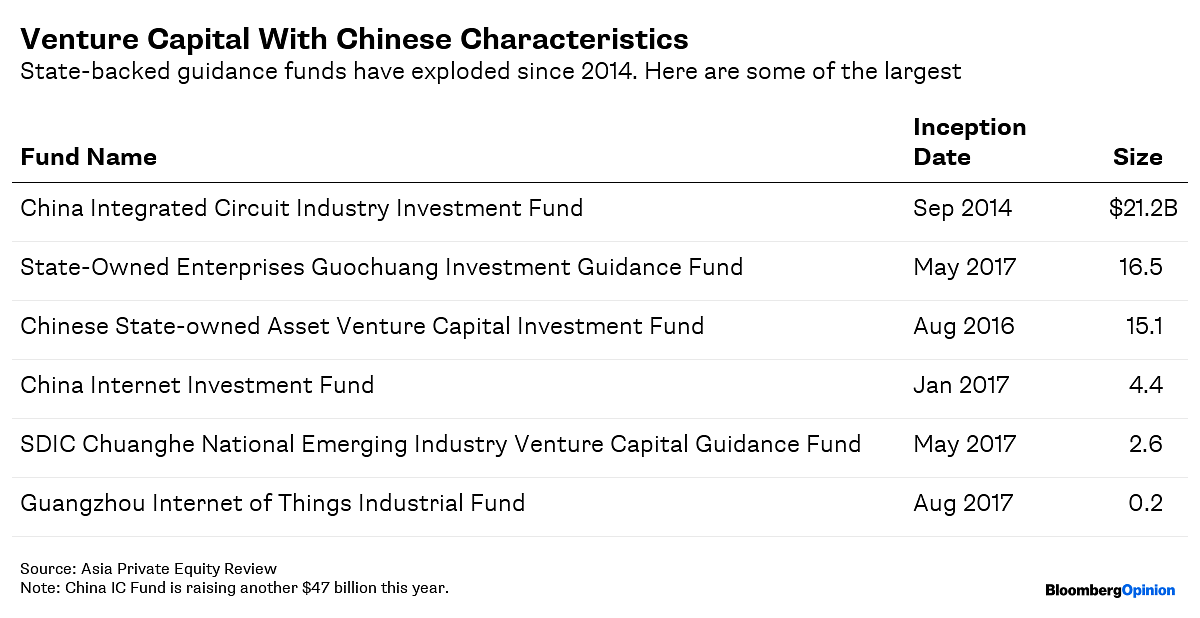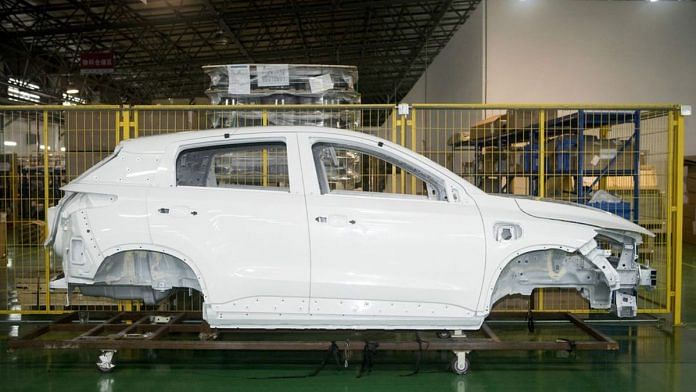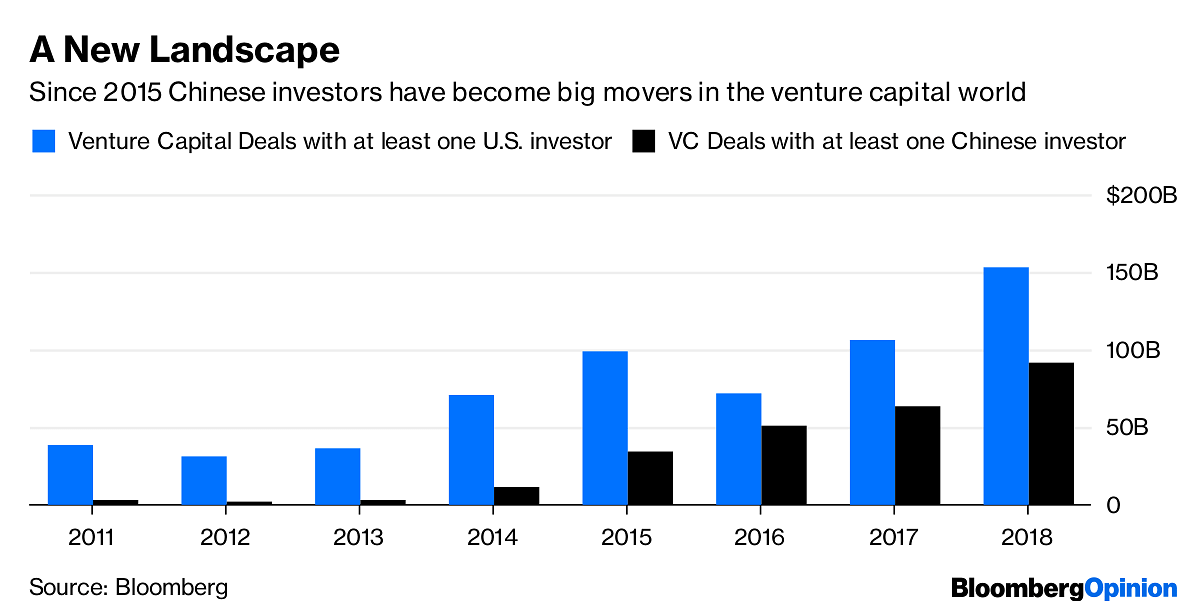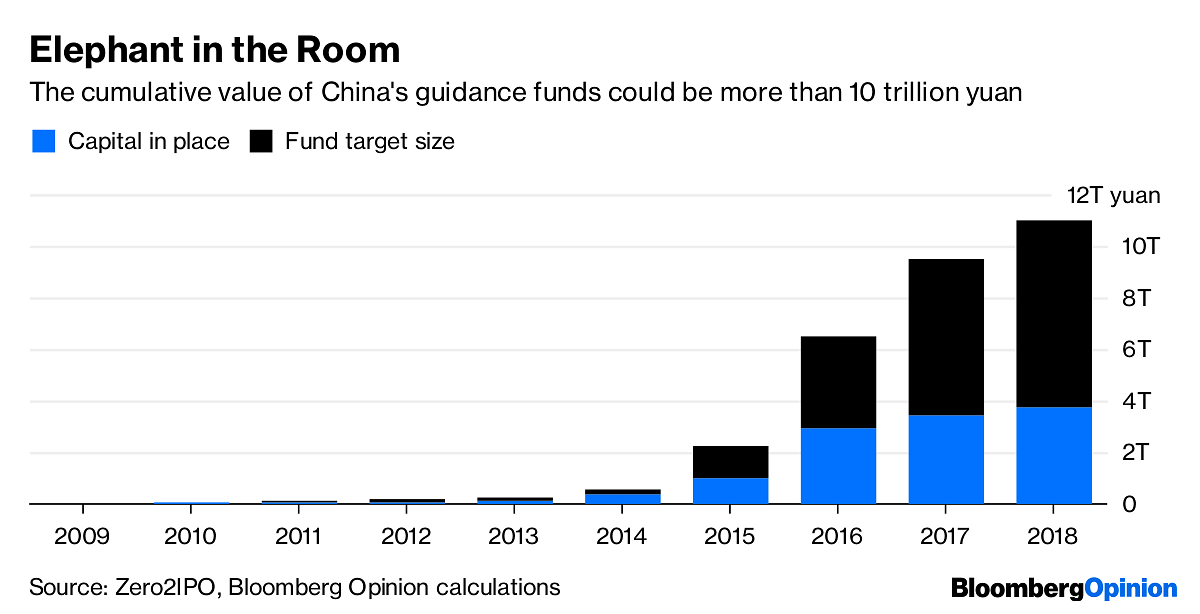As China struggles to fund its technological ambitions and catch up to the US, its basic problem is that too much capital is chasing after too few startups.
If you’re impressed by Masayoshi Son’s $100 billion Vision Fund, China’s $856 billion in “guidance funds” will blow your mind.
The country is quickly becoming a major player in the venture capital world. This year, Chinese investors are involved in over $90 billion worth of deals, second only to the US and up from only $11.5 billion five years ago.
Some of this comes from China’s technology giants turning themselves into conglomerates. Eager to emulate the success of the fund set up by SoftBank Group Corp., Tencent Holdings Ltd. and Alibaba Group Holding Ltd. are avid buyers of young companies. Even unicorns are following suit: ByteDance Ltd., which closed a $3 billion funding round in October, is now looking to raise $1.45 billion for an in-house venture capital fund.
But the government is also encouraging investments into startups, so that China can push forward its ambitious “Made in China 2025” plan, outlined three years ago.
For years, China relied on cash subsidies to encourage development of key industries. But since 2014, subsidies have been giving way to so-called “guidance funds”. As of the first half, various levels of the government had established 1,171 guidance funds, aiming to raise and deploy a staggering 5.9 trillion yuan ($856 billion) according to China Venture. Other estimates are even higher: Consultancy Zero2IPO puts the figure at more than 11 trillion yuan.
These state-backed investment pools act like venture capital funds, or funds of funds. For instance, the $21 billion China Integrated Circuit Industry Investment Fund, established in September 2014, owns a 15 per cent stake in China’s largest foundry Semiconductor Manufacturing International Corp., and is also a major investor in SMIC’s new 1.8 billion yuan venture capital vehicle.
The idea of guidance funds is not dissimilar to public-private partnerships, which Beijing scaled back a year ago: The government puts up minority equity, and lets the private sector do the heavy lifting to develop key areas such as artificial intelligence, robotics and internet-of-things.
From a strategic viewpoint, China’s technology ambitions certainly need capital. The country is at least three to five years behind the US in memory chips, according to Nomura Securities Co. US semiconductor firms spent over $100 billion on capital expenditure and research in 2018 alone.
But as China hurries to leap forward, cracks are appearing. If Masa Son has trouble deploying his $100 billion, imagine the headaches Beijing is having.
The basic problem is that too much capital is chasing after too few startups, something even the State Council is starting to realize. In its latest annual fiscal audit, China’s cabinet queried why the 40 billion yuan National Emerging Industry Venture Capital Fund and the 20 billion yuan Advanced Manufacturing Industry Investment Fund plowed billions into the same company, electric-vehicle maker BYD Co.
Or consider the 72 billion yuan Government and Enterprise Cooperation Investment Fund, established like those two funds in mid-2016. By the end of 2017, it could only deploy a tiny portion of its capital and had parked 88.7 per cent in wealth management products, which is supposed to be a no-no as China tries to rein in shadow banking.
Other ways of soaking up the oversupply of guidance fund capital pose different problems. Beijing’s initial idea was that public bodies should not contribute more than 30 per cent of the total capital of venture funds in which they invest. But as local officials jostle to show off to the big bosses in Beijing, best practices are being abandoned. This July, the government of Tianjin said its 30 billion yuan AI guidance fund no longer needs to follow the 30 per cent “hard limit.” If this goes much further, guidance funds will start looking like public-private partnerships, except without the “private” side.
Another way to deploy capital quickly is to build semiconductor industrial parks, as more than 20 cities in China are already doing. But one does wonder why China needs so many chip factories. Sure, Beijing and Shanghai boast some of China’s best universities and smartest talent, but what’s the advantage of Xiamen, a sleepy coastal city in southern China, other than that it’s just across the water from Taiwan? Guizhou, one of China’s poorest provinces, is also doubling down on industrial parks; perhaps storing data and letting robots roam around is cheap there.
One other option is to invest in hot startups overseas, but that’s now being closely scrutinized. In a November report, the Office of the US Trade Representative stated that between 2015 and 2017, 10 per cent to 16 per cent of venture capital deals in the US had Chinese investors. Going forward, the US government will only broaden its vetting of venture capital funds that have taken Chinese money.
Beijing is reportedly considering plans to delay some of the targets spelled out in its “Made in China 2025” industrial policy. That’s a win-win situation, given the backdrop of trade tensions with Washington. President Donald Trump can tout the concession as a policy victory; meanwhile, China knows it needs to step back, or risk having billions of money once again wasted on in pet projects that offer no returns. –Bloomberg






Please give a chance to women willing to join in Combat service . Not all 5 fingers are same. Making an exception relating to past experience of women to perform certain duties assigned trust women its the era of 2019!!
Kiya yar
2018 mai aisha kar diya hai ki 10 pass or echa subject 33 karke hona chaiya
Mera pass 10 pass hai lekin 33% karke echa subject nahi hai
Mujha pani des ki sawa karna bhat pasand hai ek jawan hokar
Lekin % ki bajse mai dor nahi pa raha hu
Hame bhi to chans do
Ya prsentis wale bat ko nikaldo yar
Ham bhi army mai aa shake
Siliguri mai relly hua tha lekin 8000 jawan aye tha running karne ke liya lakin 8000 mai shr 500 sirf running kare
Qki 7500 ka 10 to pass the lakin %nahi thaa
Mai kisko gali du
Modi ji ko ya mamata banrji ko ya bipin rauth ko